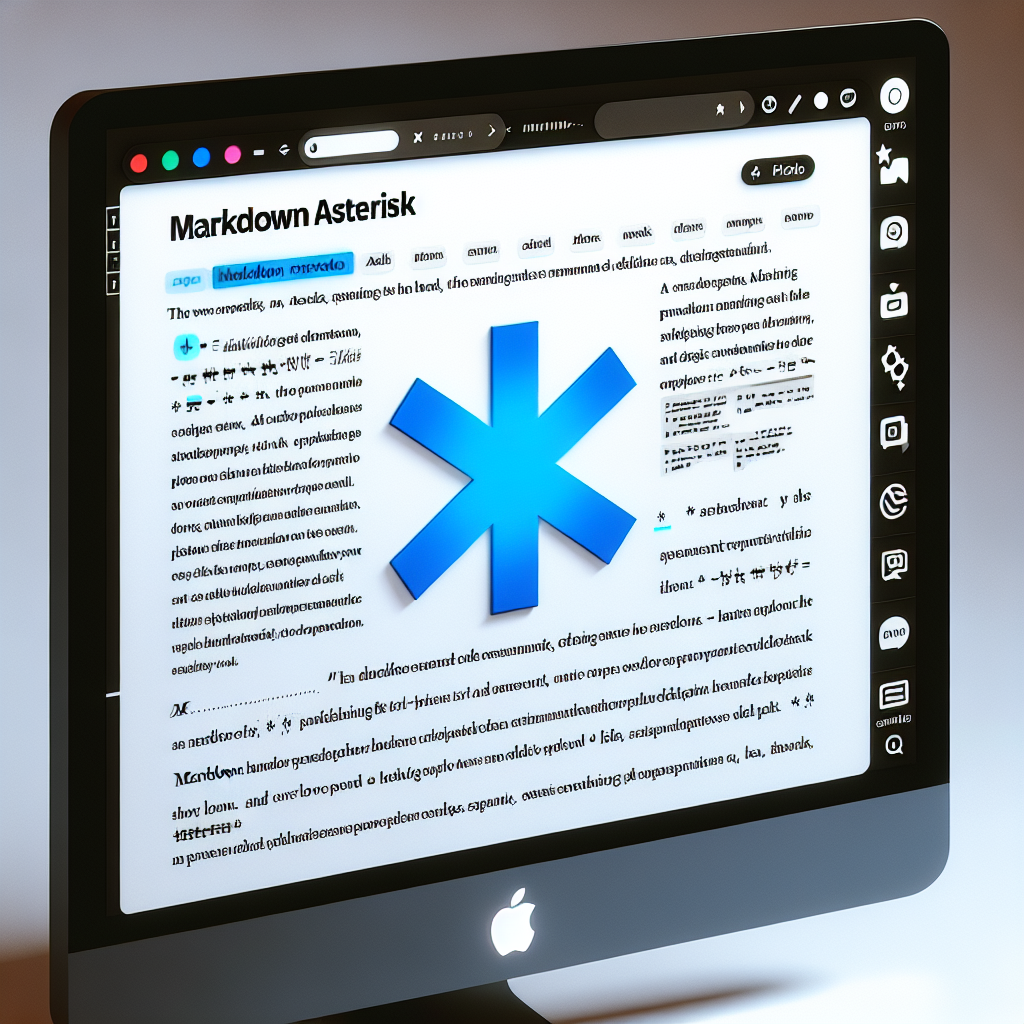Understanding Markdown Asterisk
The Markdown asterisk (*) is essential for text formatting, including italic, bold, and unordered lists. Using a backslash (\) escapes the asterisk. Mastering its use enhances document readability and content creation.

"Don't waste another minute formatting Markdown by hand. Try our free tools now and see the difference!"
Markdown is a lightweight markup language widely used for formatting text on the internet. One of its fundamental components is the asterisk (*), which plays a significant role in styling text. In this article, we will explore the various uses of the Markdown asterisk and how it can enhance the readability and presentation of your content.
1. Emphasis and Strong Emphasis
The asterisk is primarily used to add emphasis to text in Markdown. This can be done in two levels: single asterisk for emphasis (italic) and double asterisk for strong emphasis (bold).
-
Italic: To italicize text, enclose it in single asterisks.
*This text will be italic.*Result: This text will be italic.
-
Bold: To make text bold, wrap it in double asterisks.
**This text will be bold.**Result: This text will be bold.
-
Italic and Bold: You can combine both styles by using three asterisks.
***This text will be both italic and bold.***Result: This text will be both italic and bold.
2. Lists
Asterisks are also used for creating unordered lists. Each list item starts with an asterisk followed by a space.
* Item 1
* Item 2
* Subitem 2.1
* Subitem 2.2
* Item 3
Result:
- Item 1
- Item 2
- Subitem 2.1
- Subitem 2.2
- Item 3
3. Escape Characters
Sometimes, you may want to display an asterisk literally rather than it being interpreted as Markdown syntax. To do this, you can use the backslash (\) to escape the asterisk.
For example, use \* to display an asterisk.
Result: For example, use * to display an asterisk.
4. Combining Symbols
The flexibility of Markdown allows you to combine asterisks with other symbols for more advanced formatting. For example, you can use asterisks with underscores for emphasis:
-
Italic with underscores:
_This text will be italic._Result: This text will be italic.
-
Bold with underscores:
__This text will be bold.__Result: This text will be bold.
-
Mixed symbols:
_**This text is bold and italic.**_Result: This text is bold and italic.
Conclusion
The asterisk is a versatile and powerful character in the Markdown language. It can be used to emphasize text, create lists, and be combined with other symbols for advanced formatting needs. Mastering the use of the asterisk in Markdown allows you to write more effectively and present your content clearly and engagingly. Whether you are a new user or an experienced developer, understanding and utilizing Markdown asterisks will significantly enhance your content creation experience.



Comments ()